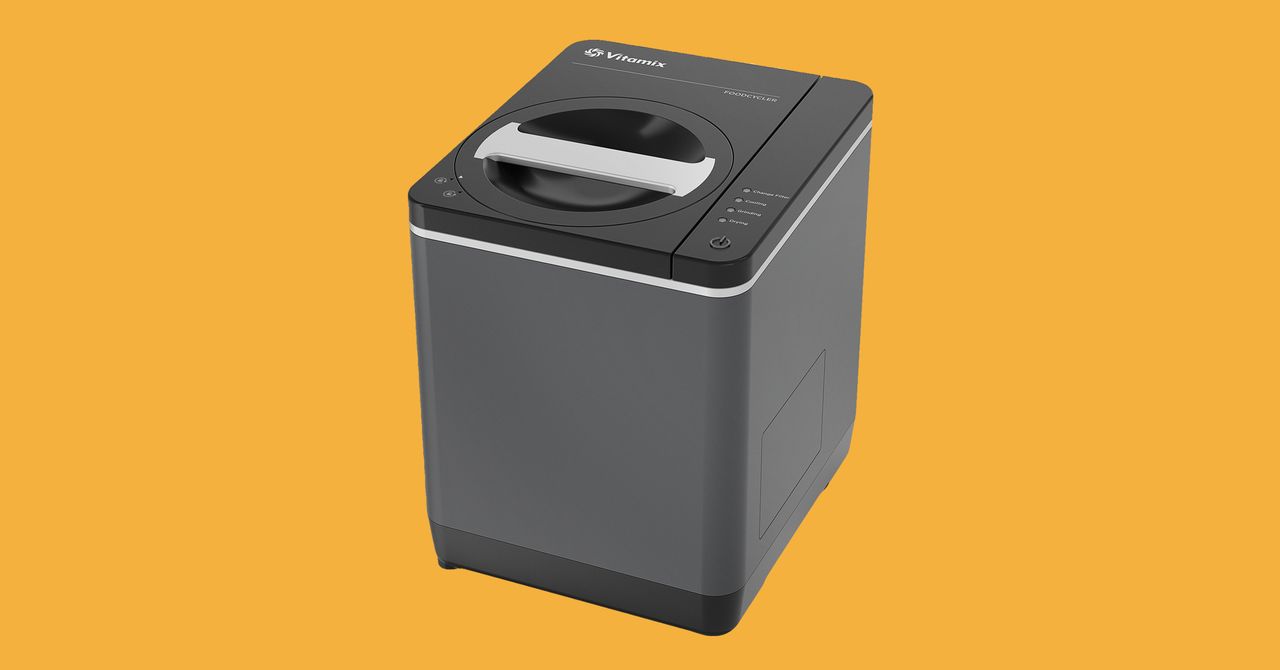The countertop kitchen composter is a lovely vision. Instead of a smelly bucket of vegetable scraps and coffee grounds breeding fruit flies on your counter or attracting rats to your backyard, you could just put it all into a nifty electric gadget, and at some undetermined point in the future you’ll have a bountiful supply of nutrient-rich compost to use in your garden.
Unfortunately, none of the more popular electric machines on the market do this. Even though some of these devices are marketed as “composters” and have instruction booklets and apps detailing all the ways in which one can use compost, the vast majority of kitchen composters are just going to grind up and dry your food scraps. Your waste output will be greatly reduced in volume and will no longer smell, but if you’re hoping to put eggshells and banana peels into a machine and magically scoop out the kind of true compost you’d buy at the garden center, that’s just not going to happen.
That said, you can mix small amounts of these grounds into potting soil in very small ratios, or use them as feeder for a “real” compost pile, but most of these machines are meant for those wanting to reduce the volume of food waste their household produces. Which is in and of itself a legitimate goal, as cast-off food makes up 24 percent of municipal solid waste, resulting in the release of methane, a destructive greenhouse gas, as it breaks down in the landfill.
Or maybe you’d just like your food grounds to be odor-free and shelf-stable before adding them to your green waste bin for municipal composting or your backyard compost. In any case, despite critics’ cries of greenwashing and corporate astroturfing, there is still value to these devices. They make people more aware of their food waste. They don’t use as much power as you think they would (around 1 kilowatt-hour was typical). And our top pick, the Reencle Prime (8/10, WIRED Recommends), even produces something close to compost.
Read on for our assessment, and once you’re done, check out some of our other kitchen-related guides, including Best Coffee Makers, Best Toaster Ovens, Best Meat Subscription Boxes, and Best Meal Kit Delivery Services.
Power up with unlimited access to WIRED. Get best-in-class reporting that’s too important to ignore for just $2.50 $1 per month for 1 year. Includes unlimited digital access and exclusive subscriber-only content. Subscribe Today.
How I Tested
I’m WIRED’s senior commerce editor in charge of home and kitchen devices and have been reviewing products for our Gear section for the past 10 months. I cook daily for my family of three, and I’ve been processing our kitchen scraps in these composters in my home kitchen since summer 2024. Each was tested under typical household use for a minimum of four weeks each, and in several cases six weeks or longer. I tested all cycles offered and with all manner of foods allowed according to the manual, and in the case of the Reencle and the Mill, even attempted to use the finished product in my yard and houseplants (to varying effect).
Table of Contents
Best Overall
As previously mentioned, none of these machines make truly ready-to-use compost, but the Reencle Prime (8/10, WIRED Recommends) comes closest to a traditional compost bin. Popular in South Korea years before it appeared in the US, the Reencle arrives with a starter bag of ReencleMicrobe (which can be purchased separately for $65) containing activated carbon, wood pellets, glucose, and a trio of patented microbes ready to chow down. There’s also a prefilled carbon filter that slots into the back.
At 14 x 15 x 22 inches, the Prime is too large for a kitchen counter but instead conveniently operates much like a heated trash can. The lid can be opened via sensor at the bottom or a button on the control panel, and in goes your organic matter. That’s it. There are no cycles, tablets, or auxiliary buckets to worry about. Even the app is totally optional. Within hours to days, depending on the item, the scraps are broken down into a material resembling a cross between dirt and sawdust.




